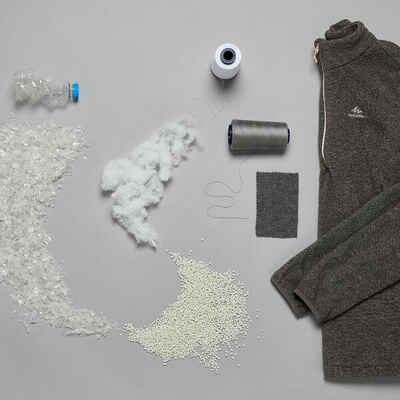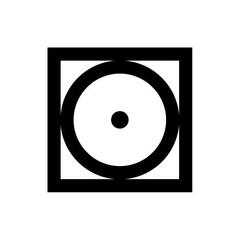Additional features
Tightening belt with rip tab.
Belt loop for added a belt if needed.
Elasticated snow gaiters.
2 large ventilation zips.
All the zips are waterproof.
3 pockets including one at the thigh with a mini pocket inside for your phone.
Water repellency
The water-repellent property of a fabric is its ability to make water run off its surface without absorbing it. This prevents the fabric from becoming waterlogged and remains light, breathable and warm. A fabric is made water-repellent by applying a treatment to its outer surface. This treatment needs to be renewed during the lifetime of the garment (we recommend every 3 washes). All Wedze jackets have received a water-repellent treatment.
Breathability of a component
To find out whether a fabric is breathable, we test its evaporative resistance or RET (based on the ISO 11092 standard). The lower the fabric's resistance, the more water vapour generated by physical activity can escape and the higher the fabric's breathability.
For example:
RET < 9 = extremely breathable fabric
9 < RET < 12 = very breathable fabric
12 < RET < 20 = breathable fabric
RET > 20 = little or no breathability.
Component waterproofing
The resistance of a fabric is measured by the height of a water column in mm that can be supported by the fabric (test based on the ISO 811 standard). The higher the pressure, the more waterproof the fabric. A fabric with a waterproof rating of 10000 mm is therefore resistant to the pressure exerted by a 10000 mm column of water
What is a membrane or coated component?
The coating is akin to a paint applied inside the fabric that makes the component waterproof while remaining breathable. It is often less expensive than a membrane and requires a liner to protect it. The membrane is a kind of very thin plastic film (polyurethane) that makes the component waterproof while remaining breathable. It has the advantage of being more flexible, lighter, more durable and often more breathable than a coating.
Waterproofness/Shower test
This garment has been validated in a shower test under 60 L of water / sqm / hour for 2 hours. This test reproduces the conditions of a rain shower in the mountains.
How do we make a garment waterproof?
The waterproof properties of the garment are related to its fabric, seam sealing and assembly design.
We then carry out shower tests on our garments.
Tutorial on how to wash your waterproof garment
With each wash, we recommend that you follow this guidance to preserve all the technical features of your garment.
Link: https://youtu.be/rh4GLwALgBM
After three washes, restore the water repellent properties with a waterproof spray or wash-in product.
How do I know if my clothing is breathable?
In addition to the breathability of the fabrics used, we employ technical solutions (zips, vents, mesh) improving the overall ventilation of our jackets and trousers designed for Freeride skiing. These ventilation systems regulate the temperature inside the garment while also helping to eliminate the perspiration generated by the body during physical activity.
Your product is repairable
This product is repairable.
We commit to repairing your product free of charge for the duration of the warranty. Whatever it is, fixings, seams, zips, etc. This service is offered in your usual store.
If, however, we can’t repair your product (non-repairable production defect), you can exchange it or get a refund.
What is the RECCO® system?
All our Freeride jackets and trousers are equipped with the RECCO® system.
With RECCO® technology, you can be located in the event of an avalanche. Someone who is buried in the snow can be quickly and accurately located by the emergency services using the RECCO® tracker and reflectors. RECCO reflectors are not a substitute for an AVD. The RECCO® technology works as a complementary measure, increasing the chances of being found in time.
To help you choose the right size
The model on the photo is wearing a size M and measures 175 cm.
Measurements:
Chest measurement: 92 cm
Waist measurement: 66 cm
Hip measurement: 89 cm
 Material
Material Process
Process



